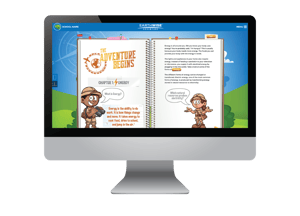The term “engagement” seems to have landed itself onto this decade’s list of popular buzzwords. Whether it is in business or in our daily lives, the term is used (and used often) to describe how we interact with a brand, product or concept.
At its core, the term is used to describe the model of how information is passed back and forth between a provider and a consumer, as opposed to information being projected at a consumer with zero reciprocation. Engagement has become the goal, rather than simply the model of communication, and is currently the key to any business’s success. Businesses want consumers to interact with their products, provide feedback and ultimately feel like investors in the product they are buying, using, or consuming.
Another term that has fundamentally transformed the American lexicon is “technology”. The worlds of technology and human interaction have collided, and fused together in fantastic and even unexpected ways. Through the revolution of mobile devices, we are now able to engage with our target audiences in ways that we couldn’t have imagined 10 years ago. Mobile apps capable of running virtually every aspect of our lives have become so prevalent in our day to day shuffle, that many amongst us can hardly imagine a world devoid of them. Businesses at the forefront of the fast changing world of mobile technology (and app development in particular) are now, more than ever positioned to reap boundless rewards. For many, the holy grail of engagement is to make the consumer itself a source of information.
The New Age of Gamification

At the forefront of the technology revolution (and those most open to its adoption) are today’s youth. Technology has shifted the psychology of our youngest generation into a culture that thrives on instant interaction with information from seemingly limitless sources. Moreover, engagement with technology at this age level has evolved to become far more personal, and naturally interactive (think social media). While technology and its prolific availability are often perceived as counterproductive, if not harmful to education, this notion should be cautiously resisted. Mounting imperial research has shown that tremendous benefits can be achieved when applications are thoughtfully paired with well-designed curriculum. ‘Gamification’ is all about the practice of engaging the student in a way that makes the learning process seem fun. In this context, the student doesn’t even realize that they are learning.
With an educational program, applications present a large opportunity for curriculum engagement. We know that many students have access to mobile devices and those devices are becoming more and more prevalent as classroom tools. Since these devices are already engrained into the culture of the modern student, why not create an application that makes learning more fun and exciting, while also gauging their level of understanding of the content being presented? That is exactly what we at AM Conservation Group have been doing as an addition to our Measure-Based Education® programs.
How Gamification is Used for Effective Efficiency Education
 With the goal of engagement in mind, we have been creating applications that are essentially a game, but are designed to apply the concepts in our educational content to scenarios that model real-life situations students may encounter. In order for students to advance through the levels of the game, they must have a basic understanding of the products they are given and the concepts that are presented in the curriculum, and be able to apply that knowledge to the game’s scenarios. There are additional aspects to the game’s design, like trivia, that add points to the student’s overall game score, enticing them to have a more thorough understanding of the concepts that are presented on each level. The points in their score and the progression through the levels add a degree of positive reinforcement for students when learning the curriculum, and the game model does this in a way that is also intrinsically motivating for students to learn more about the material.
With the goal of engagement in mind, we have been creating applications that are essentially a game, but are designed to apply the concepts in our educational content to scenarios that model real-life situations students may encounter. In order for students to advance through the levels of the game, they must have a basic understanding of the products they are given and the concepts that are presented in the curriculum, and be able to apply that knowledge to the game’s scenarios. There are additional aspects to the game’s design, like trivia, that add points to the student’s overall game score, enticing them to have a more thorough understanding of the concepts that are presented on each level. The points in their score and the progression through the levels add a degree of positive reinforcement for students when learning the curriculum, and the game model does this in a way that is also intrinsically motivating for students to learn more about the material.
Through this mode of engagement, students are incentivized to learn the information and engage with the content in a way that is fun, convenient, and also rewarding. Using the game as a mobile application to emphasize the concepts students are already learning through the in-classroom curriculum, as well as in the at-home activities, allows us as implementers to bring the ideas they are learning full-circle in a way that students can (and want to) utilize. This multi-dimensional approach to our educational programs is just one of the many ways that we have been able to successfully differentiate our educational programs from others on the market.
 Do you see energy efficiency programs benefiting from mobile app design and implementation as a mode of engagement? AM Conservation Group can help further engage students in your energy efficiency program, resulting in increased savings. And, if you're looking for an online efficiency education program, complete with an engaging gamification interface, look no further than EarthWise Adventure™!
Do you see energy efficiency programs benefiting from mobile app design and implementation as a mode of engagement? AM Conservation Group can help further engage students in your energy efficiency program, resulting in increased savings. And, if you're looking for an online efficiency education program, complete with an engaging gamification interface, look no further than EarthWise Adventure™!






